The Military in Spain: A Modern Overview
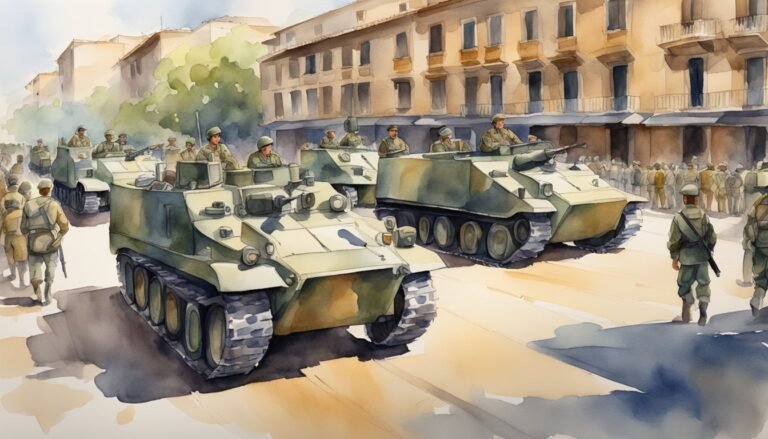
The military of Spain has a rich history and plays an important role in the country’s defense. Spain’s military power ranks among the top 20 globally, ensuring its sovereignty and territorial integrity.
If you’re curious about how Spain’s armed forces operate today, their organizational structure includes the Army, the Navy, the Air and Space Force, the Royal Guard, and the Military Emergencies Unit.
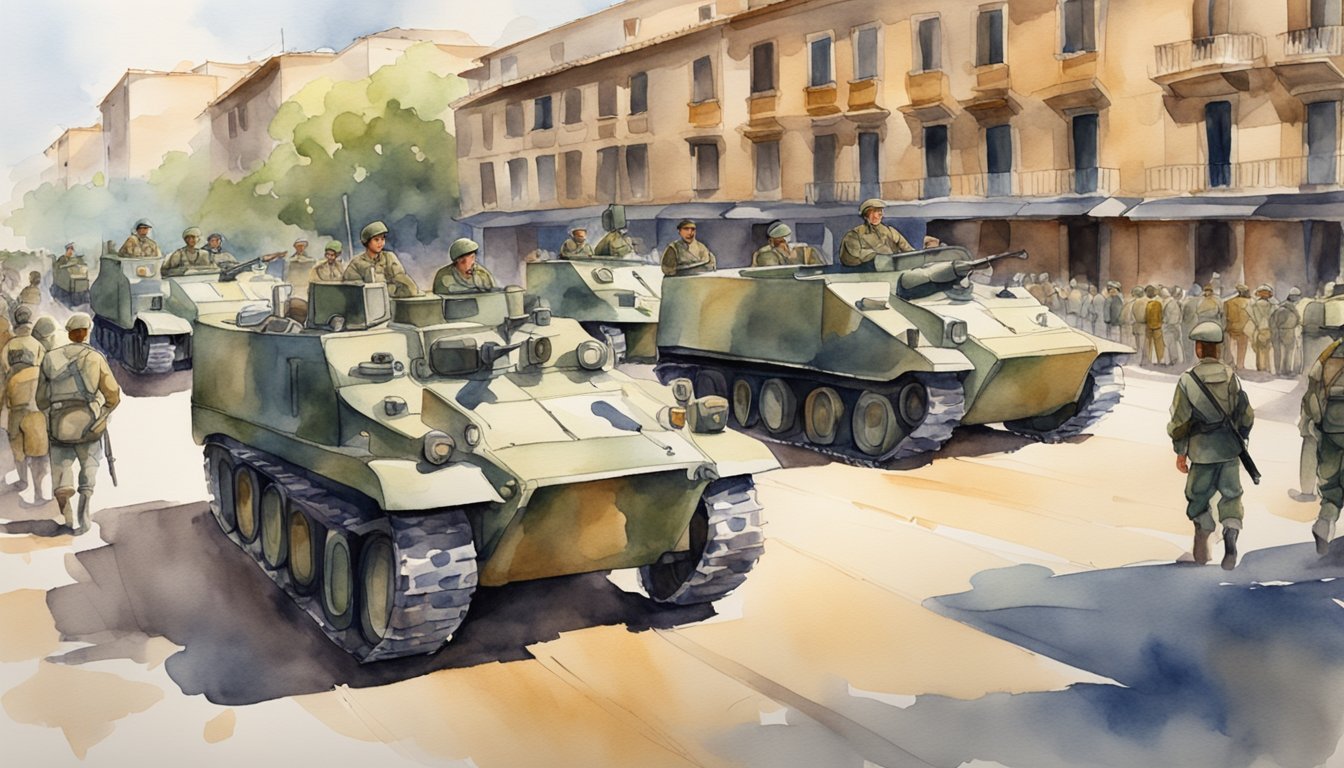
Dating back to the late 15th century, the Spanish Army is one of the oldest in the world.
This long history includes significant periods where Spain was a dominant global power.
The modern force continues to evolve with new technologies and equipment, ensuring it meets today’s defense demands.
Despite these advancements, Spain’s defense spending remains a topic of debate.
Historical context and past conflicts influence current attitudes towards military investments.
Spain is a key member of NATO, contributing to international defense while balancing its own military needs.
Key Takeaways
- Spain’s military ranks in the top 20 globally.
- The Spanish Army is one of the oldest active armies, dating back to the late 15th century.
- Spain’s defense spending and military investments are influenced by its historical context.
Historical Perspective
Spain’s military history spans diverse eras, from its dominance during the Spanish Empire to its role in the struggle against terrorism today.
Each period saw significant changes and challenges that shaped Spain’s military.
Spanish Empire and Military Evolution
During the 16th and 17th centuries, Spain was a dominant power in Europe.
The Spanish Empire expanded its territories across the globe, including the Americas, Asia, and Africa.
Spain’s military was central to this expansion.
Strategies like the tercio formation, a mixed infantry, played a crucial role in battles.
The Reconquista, where Spanish forces reclaimed the Iberian Peninsula from Muslim rule, showcased Spain’s military prowess.
Later, the Spanish Armada attempted to invade England, though it ultimately suffered a significant defeat.
The Peninsular War and Later Conflicts
The Peninsular War (1807-1814) was a fierce and brutal conflict.
Spain, allied with Britain and Portugal, fought against Napoleon’s French forces.
This guerrilla warfare greatly affected military tactics and highlighted the resilience of Spanish fighters.
In the 19th century, Spain also faced internal strife and colonial wars.
Conflicts like the Carlist Wars and the Spanish-American War marked this period.
The decline of Spain’s overseas empire was a significant blow to its military and economic power.
Spanish Civil War Impact
The Spanish Civil War (1936-1939) was a grim chapter in Spain’s history.
The conflict between Nationalists, led by Francisco Franco, and Republicans tore the country apart.
It also tested modern military tactics and technologies, such as tanks and air power.
Thousands of foreign fighters joined the International Brigades to support the Republicans.
The war had broader implications, setting the stage for World War II.
The Nationalist victory established a military dictatorship that lasted until Franco’s death in 1975.
Modern Era and NATO Membership
Post-World War II, Spain sought to rebuild and modernize its military forces.
In 1982, Spain joined NATO (North Atlantic Treaty Organization), marking a significant step in its integration into Western defense structures.
This move ensured Spain’s participation in collective defense and global military cooperation.
Spain modernized its armed forces, participating in various NATO missions, including peacekeeping operations in the Balkans.
The focus was on enhancing capabilities and interoperability with other NATO members.
Participation in the War on Terror
Spain has actively participated in the War on Terror.
Following the September 11 attacks, Spain joined international coalitions in Afghanistan and Iraq.
Spanish troops worked on reconstruction, training local security forces, and combat operations.
The 2004 Madrid train bombings deeply impacted Spain.
The attack was carried out by Islamic extremists protesting Spain’s involvement in the Iraq war.
This event shaped Spain’s counter-terrorism policies and renewed its focus on internal and external security measures.
Organizational Structure
Understanding the military structure in Spain is crucial to grasp how its various branches operate and ensure national defense.
Each branch has distinct roles and responsibilities that contribute to the overall military strategy.
Ejército de Tierra – Army
The Ejército de Tierra is Spain’s land force.
It’s responsible for land-based military operations.
The command is based in Seville and headed by a three-star general.
It includes several key units like the Land Force and Land Force Headquarters.
The structure is designed to maintain readiness and quick response capabilities.
Training and operations are central to this branch, ensuring that troops are prepared for various missions, both domestically and internationally.
Armada Española – Navy
The Armada Española handles maritime defense and operations.
This branch protects Spain’s waters and engages in international maritime missions.
Key components include surface ships, submarines, and naval aviation.
The Navy also has specialized units like the Marine Infantry which provide rapid response capabilities.
Their operations are crucial in ensuring the security of Spain’s maritime interests, from patrolling the Mediterranean to participating in NATO missions.
Ejército del Aire – Air Force
The Ejército del Aire, or Air Force, is tasked with defending Spain’s airspace.
It operates various aircraft including fighters, transport planes, and helicopters.
The Air Force is also involved in international missions, providing air support and participating in joint operations.
They are strategically stationed at key bases throughout Spain to ensure rapid deployment.
Advanced training and technological capabilities are a focus, maintaining a high level of readiness for any aerial threats or missions.
Common Corps and Paramilitary Forces
Apart from the main military branches, there are the Common Corps and Paramilitary Forces.
These include units like the Royal Guard and the Military Emergencies Unit.
The Common Corps provide essential services such as logistics, medical support, and legal services, ensuring the smooth operation of military functions.
Paramilitary forces like the Guardia Civil play a crucial role in internal security, border control, and anti-terrorism efforts.
These forces bridge the gap between military and civil defense, providing comprehensive support and security across various domains.
Personnel and Manpower
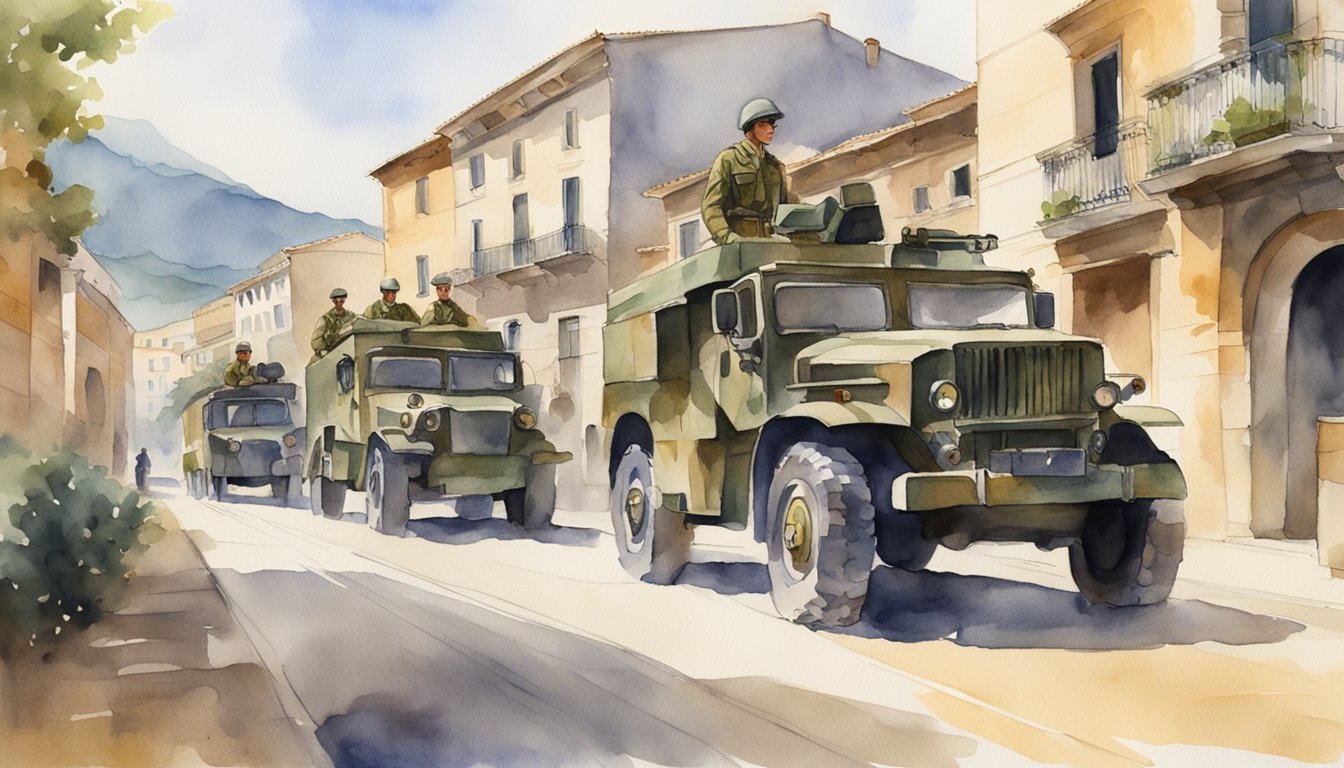
Spain’s military consists of both active personnel and reserve forces.
Understanding their roles helps paint a complete picture of the nation’s defense capabilities.
Active Personnel
Spain’s active military personnel includes around 120,000 soldiers.
These individuals serve in various branches such as the Army, Navy, and Air and Space Force.
Active duty soldiers are always prepared for deployment.
They train regularly to stay ready for any emergencies.
These soldiers make up the main strength of Spain’s military and are crucial for maintaining national security.
Reserve Force and Training
The reserve force in Spain is smaller but still an important part of the military framework.
There are about 15,000 reserve soldiers.
These troops are usually veterans or former active duty personnel who can be called back to serve when needed.
Reserves undergo regular training to keep their skills sharp.
They often participate in joint exercises with active personnel.
This ensures that they can integrate smoothly if they are reactivated for duty.
Conscription History
Spain used to have mandatory military service, but this changed in recent years.
Conscription was formally ended, allowing for an all-volunteer military force.
While there is no more mandatory service, the Spanish Government can still mobilize citizens between 19 and 25 years of age during a national emergency.
This ensures the country can quickly increase its manpower if required.
Military Service Schemes
Military service in Spain is open to both men and women between 18 to 26 years old.
Volunteers sign up for a period of 2-3 years.
Women are fully integrated and can serve in all branches, including combat units.
This inclusive structure adds strength to Spain’s defenses.
The military provides specialized training programs for these volunteers, ensuring they are well-prepared for their roles.
Military Installations
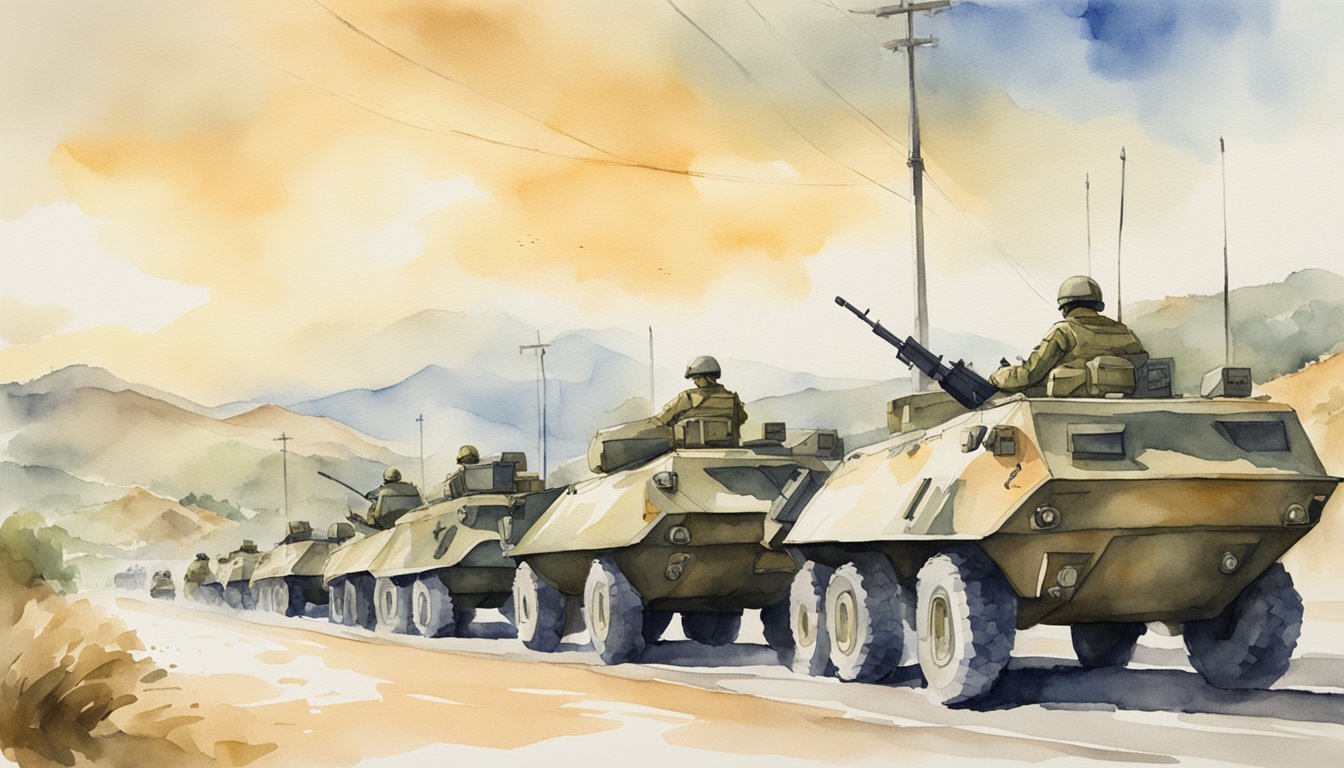
Spain hosts a variety of important military installations, including air bases and naval stations.
These facilities support personnel and operations for both the United States and Spain.
Naval Station Rota and Other Bases
Located along the Cádiz coastline, Naval Station Rota is the largest American military community in Spain.
This base is strategic as it supports both U.S. and NATO ships.
It houses U.S. Navy and Marine Corps personnel, along with smaller Army and Air Force units.
The base allows for quick deployment and rapid support of military operations.
Rota’s position makes it a key logistics hub.
It covers around 6,000 acres, offering vital facilities for maintenance, storage, and training.
The presence of a Spanish rear admiral commands the base, ensuring cooperation between the U.S. and Spain.
Morón Air Base and Airfields
Morón Air Base is situated in Andalusia, about 50 km from Sevilla.
This air base is crucial for American interests in Europe and the Mediterranean.
It hosts U.S. Air Force and Marine Corps aircraft, offering support for rapid deployments.
Besides its strategic location, Morón is equipped with extensive facilities, including runways that can handle large military aircraft.
The base also plays a key role in training and exercises, making it an integral part of U.S. military operations in the region.
Torrejón Air Base is another significant air base, although its role has reduced since Spain’s NATO membership referendum.
The Spanish government negotiated the reduction of the U.S. military presence, particularly the removal of F-16 aircraft from this base.
Key Army Garrisons
In Spain, the U.S. Army maintains a smaller presence, but it is no less important.
The primary garrison is located in Rota, where Army units support logistics and other operations.
Though not as publicly highlighted, these Army units work closely with other branches and allied forces.
They ensure that ground support is ready for any joint missions and play a crucial role in maintaining operational readiness within the region.
These installations collectively enhance the U.S.’s capability to respond quickly to global threats and support NATO missions efficiently.
Equipment and Technology
The Spanish military maintains a diverse array of modern equipment and vehicles.
These range from advanced aircraft and helicopters to a formidable naval fleet and specialized units equipped for unique missions.
Armored Vehicles and Tanks
In the Spanish Army, there’s a good mix of armored vehicles and tanks.
You might encounter the Leopard 2E, a powerful battle tank.
Its firepower and armor make it a key asset.
There are also lighter vehicles like the Pizarro Infantry Fighting Vehicle.
This vehicle’s versatility makes it an important part of the ground forces.
Self-propelled artillery like the SPH M109 gives your units mobile fire support.
This artillery system is crucial for keeping your enemies at bay.
The combination of these armored vehicles helps you tackle a variety of combat scenarios effectively.
Aircraft and Air Superiority
Aircraft play a vital role in Spain’s military capabilities.
The Eurofighter Typhoon stands out as a versatile fighter jet.
You’re likely to find this jet providing air superiority and defense.
It’s designed for both air-to-air and air-to-ground missions, making it a flexible addition.
Helicopters like the Tiger Attack Helicopter offer additional support.
These helicopters are perfect for close air support and reconnaissance missions.
Transport aircraft such as the A400M Atlas handle logistics, moving troops and equipment efficiently.
This blend of fighters, attack helicopters, and transport aircraft enhances your air strategy.
Naval Fleet Composition
Spain’s naval fleet is impressive and varied. Frigates like the Álvaro de Bazán-class are noteworthy for their advanced Aegis combat systems.
These serve as key components for air defense and anti-submarine warfare.
The fleet also includes S-80 Plus submarines.
You use these for stealthy underwater operations and intelligence gathering.
The Juan Carlos I, an amphibious assault ship, can function as an aircraft carrier.
It’s a significant asset for projecting power overseas. Patrol vessels ensure your coastlines are secure and add more versatility to operations.
The Spanish Navy’s diversified fleet serves many strategic roles.
Specialized Units
Spain also maintains specialized military units for unique threats.
The Military Emergencies Unit (UME) is one of these.
You rely on UME during national emergencies like natural disasters.
They are trained for rapid response and have specialized equipment for all kinds of rescue missions.
The Royal Guard focuses on protecting the Spanish royal family.
Their training and equipment are specially tailored for VIP protection. Special Operations Forces (SOF) carry out tasks that require high skill levels, such as counter-terrorism and reconnaissance.
Their advanced equipment and training help you tackle the most challenging missions.
Defense Spending and Budget
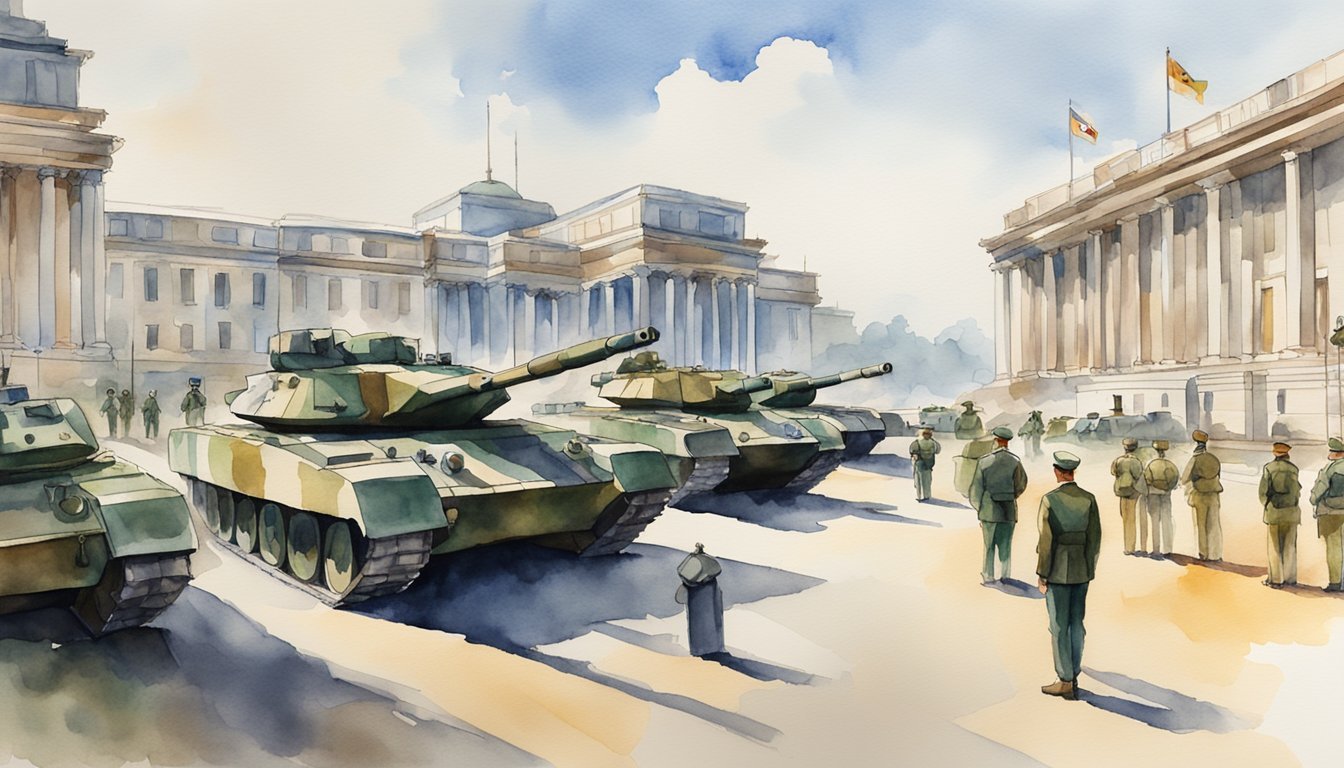
Spain’s defense spending has seen changes over the years.
These changes reflect the country’s economic priorities and obligations to alliances like NATO.
Analysis of Military Expenditure
Spain’s defense budget has varied significantly over time.
For instance, in 2020, military spending was $17.43 billion, increasing by 1.41% from 2019.
The following year, 2021, saw a more notable rise to $19.54 billion.
This represents a 12.12% increase, showing a strong commitment to boosting the military.
In 2023, the budget aimed for 2.17% of the GDP.
This is above the NATO guideline.
Spain’s spend helps finance multiple areas like armed forces, peacekeeping forces, and defense ministries.
Each increase shows a government effort to respond to defense needs.
Comparison with Global Spending
When you compare Spain’s spending to other countries, it stands out in certain ways.
In 2024, Spain’s defense spending was predicted to be 1.28% of its GDP.
This is lower than many NATO partners.
For context, NATO advises members to spend at least 2% of GDP on defense.
Globally, countries like the U.S. and China spend significantly more on their military.
While Spain’s budget increases, it still lags.
This affects its Global Firepower ranking, which considers budget among other factors.
The importance of defense spending in Spain can’t be overstated.
Growing investment reflects changing global dynamics and national priorities.
Key Military Operations
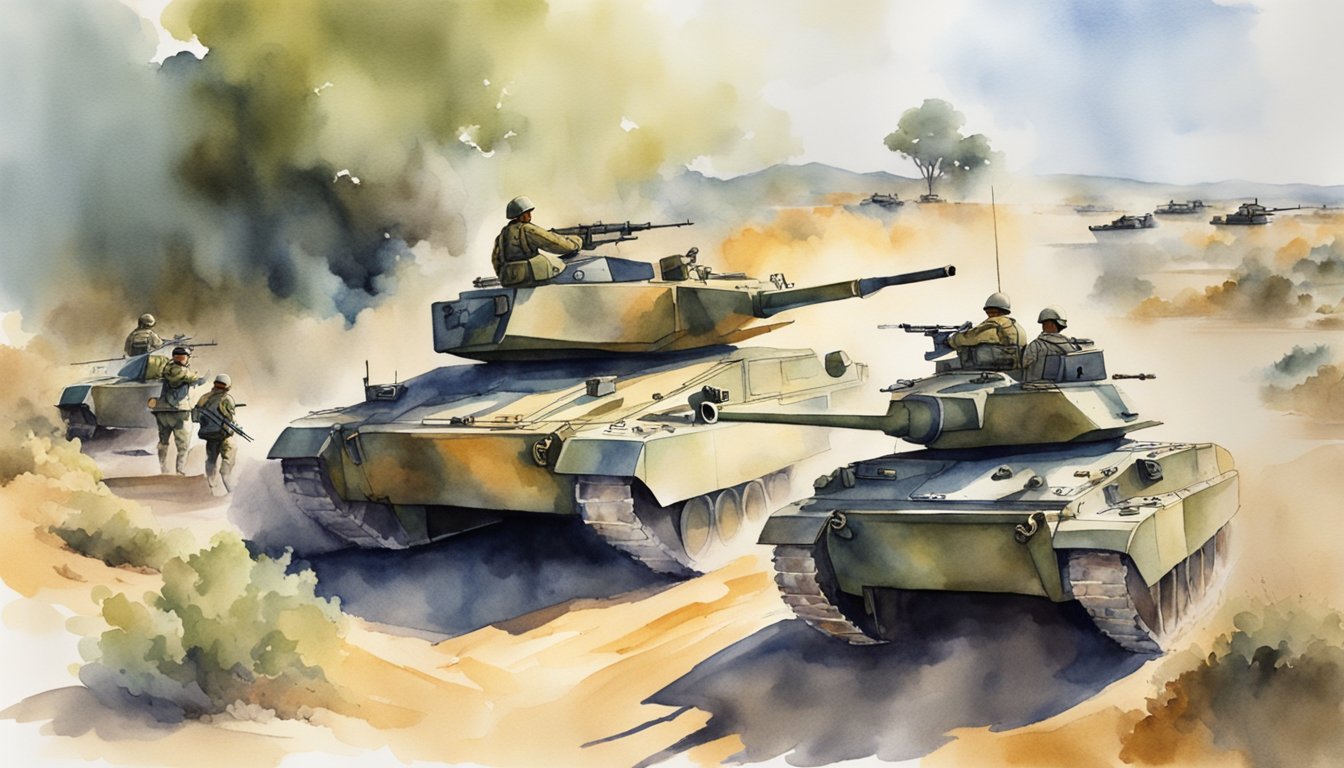
Spain engages in various military operations that include responding to national emergencies and participating in international peacekeeping missions.
These efforts showcase the country’s commitment to both national safety and global stability.
National Emergencies Response
Spain’s ability to handle national emergencies is impressive.
The Military Emergencies Unit (UME), which was founded in 2005, plays a critical role in managing these situations.
The UME is trained to respond to natural disasters like floods, wildfires, and earthquakes.
Its quick deployment and specialized equipment make it highly effective in saving lives and mitigating damage.
For example, during wildfires, the UME works alongside local fire departments to control and extinguish blazes swiftly.
You might also notice the presence of the Royal Guard in these operations.
While their primary role is to protect the Spanish Royal Family, they also assist in various crisis situations.
These efforts help maintain order and provide security during national emergencies.
Peacekeeping and International Missions
Spain is proactive in international peacekeeping through missions organized by the United Nations and the European Union.
Since 1989, the Spanish army has participated in over sixty international missions.
In United Nations Missions, Spanish troops have served in conflict zones like Afghanistan and Lebanon.
Spanish forces contribute to restoring peace and stability in these areas.
Additionally, Spain supports EU-led initiatives such as EUNAVFOR Atalanta and EUNAVFORMED Sophia, focusing on maritime security.
These missions highlight Spain’s dedication to global security.
By participating in peacekeeping operations, Spanish forces help reduce conflict and support humanitarian efforts worldwide.
This international involvement not only benefits other countries but also strengthens Spain’s position in global alliances.
Alliances and Relations
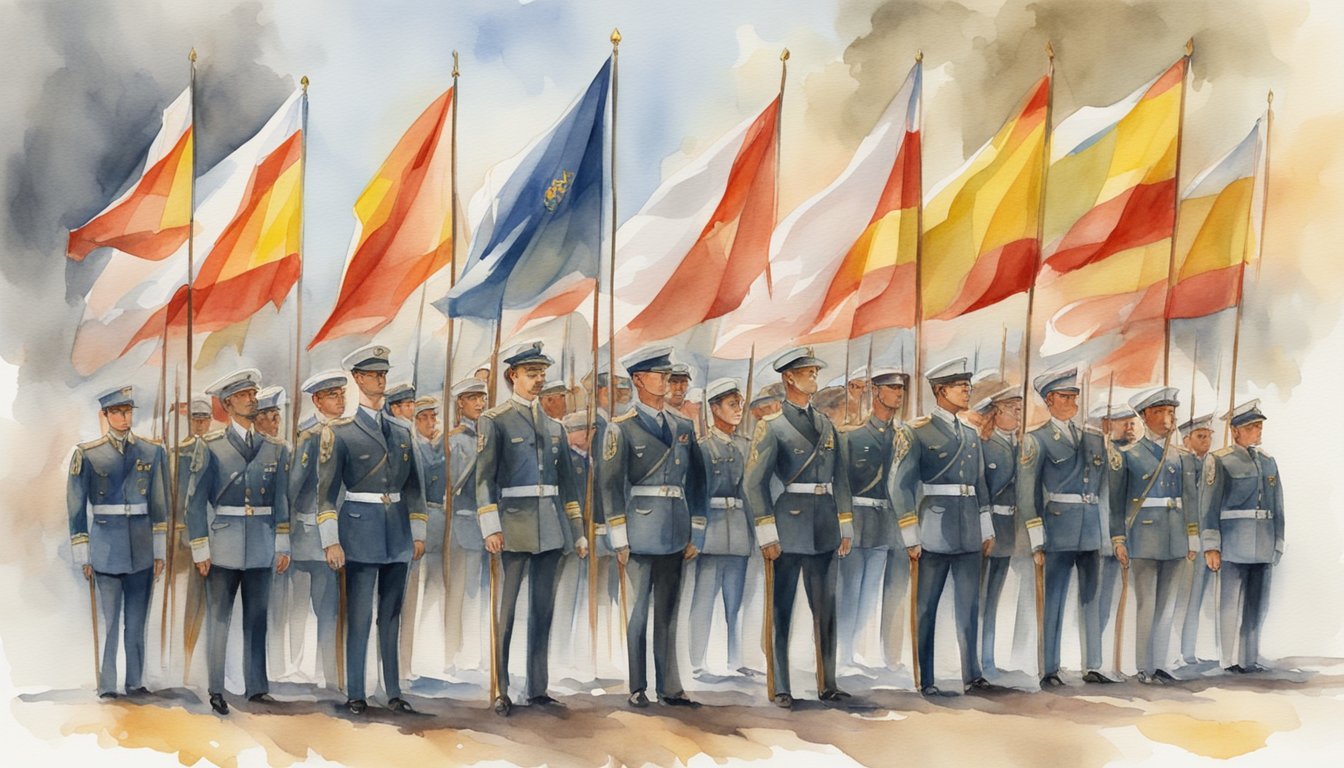
Spain’s military alliances and international relations are key to its defense strategy.
Spain works closely with NATO, maintains strong ties with the United States, and collaborates with the European Union on security issues.
NATO Partnerships
Spain joined NATO in 1982, marking a significant shift in its military strategy and global standing.
Being part of NATO means Spain contributes to and benefits from collective defense measures. Article 5 of the Washington Treaty is a central pillar, stating that an attack on one ally is an attack on all.
Spain’s location is strategic for NATO, aiding in security operations across Europe and North Africa.
In recent years, Spain has played a significant role in NATO’s new Strategic Concept, focusing on modern threats such as cyber-attacks and terrorism.
Spain’s contributions include providing troops for NATO missions and hosting military exercises to improve readiness and coordination among member states.
Relations with the United States
Spain’s military relationship with the United States started in the early 1950s.
Over the years, it has grown stronger, with mutual defense agreements that benefit both nations.
Spain hosts several US military bases, such as Naval Station Rota and Morón Air Base, which are crucial for operations in Europe, Africa, and the Middle East.
Joint military exercises and training programs between Spain and the United States enhance interoperability and readiness.
This partnership also involves technology transfers and joint development of advanced military systems and equipment.
The cooperation has proven valuable in addressing global security challenges and regional instabilities, including threats from Russia and North Korea.
European Union Defense Collaboration
As a member of the European Union, Spain actively participates in EU defense initiatives.
The Common Security and Defense Policy (CSDP) allows Spain to contribute to peacekeeping, crisis management, and humanitarian missions.
Collaboration within the EU strengthens Spain’s military capabilities through shared resources and joint projects.
Spain supports EU missions such as those in Ukraine and parts of Africa, providing troops and resources.
Building a shared defense market within the EU is also a priority for Spain, encouraging innovation and efficiency.
This includes working on joint defense projects that enhance operational capabilities and reduce dependency on non-EU countries.
Spain’s involvement in EU defense frameworks helps maintain regional security and stability while promoting democratic values that align with its national interests.
Cultural and Social Impact
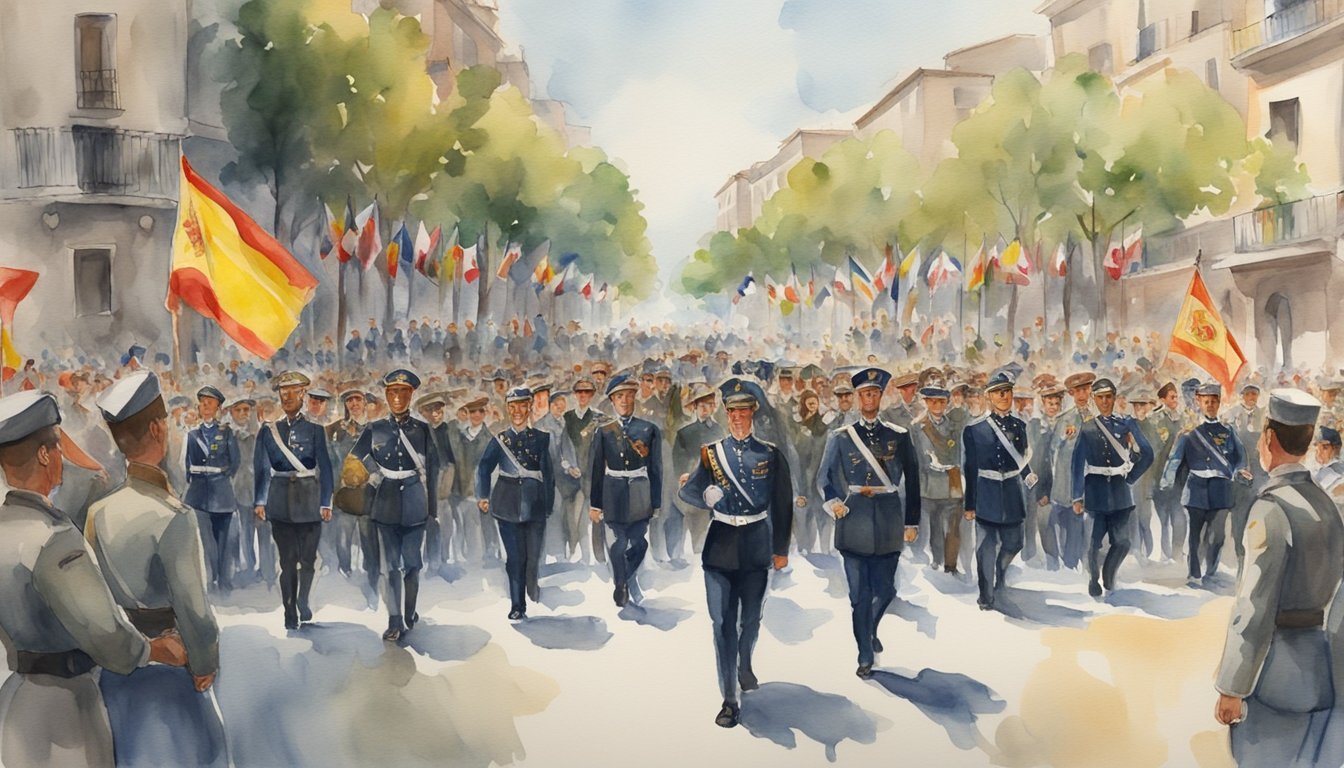
The military’s role in Spain has deeply shaped both its culture and society.
Below, you will see specific ways the military has influenced various aspects of Spanish life and how the public perceives and supports the armed forces.
Military Influence on Spanish Culture
The military has left a significant mark on Spanish culture.
For instance, the structure and discipline of the armed forces have inspired organizational frameworks in various institutions throughout the country.
Traditional events, such as the Día de la Hispanidad parade, showcase the military’s presence and foster national pride.
Military institutions also impact art and literature.
Films and books often depict the Spanish Army’s role in historical events, providing a lens through which you can view the country’s past.
The Spanish military’s participation in international missions highlights Spain’s commitment to global security and influences cultural perceptions within the nation.
Public Perception and Support
Public perception of the Spanish military has varied over time.
During the Franco era, the military was a central force in governance, which led to polarized views.
Some people saw the military as a stabilizing force, while others viewed it as an oppressive regime.
In recent years, the Spanish Army has participated in humanitarian and peacekeeping missions.
This has helped to improve its public image.
Surveys show that many Spaniards now support the military, appreciating its role in both national defense and international operations.
Support for the military is evident during public events and national holidays when parades and ceremonies celebrate the armed forces.
This support strengthens the bond between the military and the civilian population, reinforcing a collective sense of identity and pride in the nation.
Future of the Spanish Military
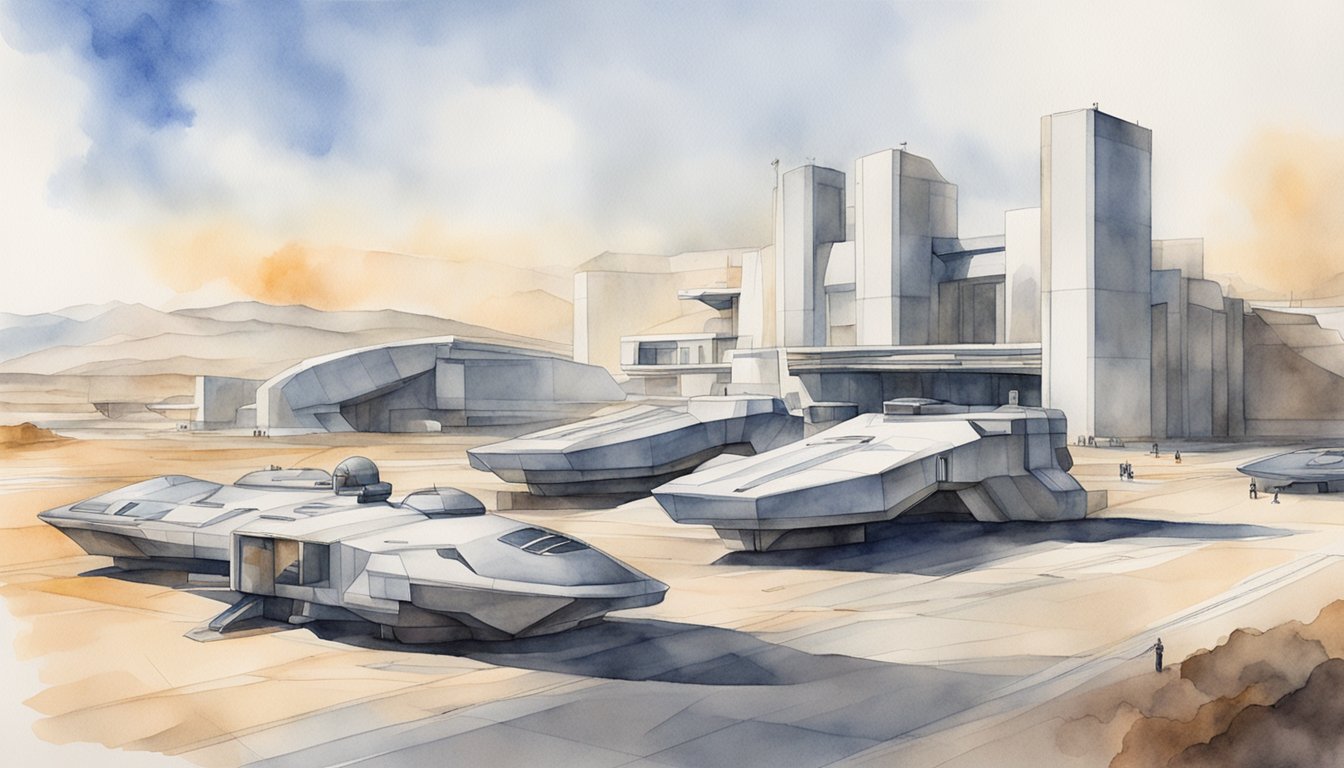
The future of Spain’s military involves pushing forward with the modernization of its forces and addressing several strategic challenges.
This involves boosting technology and innovation within the military and responding to global and regional threats.
Modernization and Development Plans
Spain is actively working on modernizing its military forces.
A key project is the Future Combat Air System (FCAS), which it is developing in collaboration with France and Germany.
This program aims to replace older aircraft and integrate newer technologies, such as unmanned systems and advanced missiles.
The focus is also on upgrading naval capabilities with new ships and submarines, enhancing cybersecurity measures, and creating more robust communication networks.
Investing in high-tech equipment helps you maintain a competitive edge in defense and supports Spain’s strategic goals.
Challenges and Strategic Outlook
The Spanish military faces several challenges.
Budget constraints make it difficult to fund all the necessary upgrades and expansions.
You need to adapt to the evolving nature of global military threats, including cyber attacks and terrorism.
Another challenge is maintaining a skilled workforce.
Programs like the three-year military training for Crown Princess Leonor are part of efforts to prepare future leaders.
Addressing these challenges is essential for ensuring that Spain’s military remains effective and ready to respond to threats.
Frequently Asked Questions
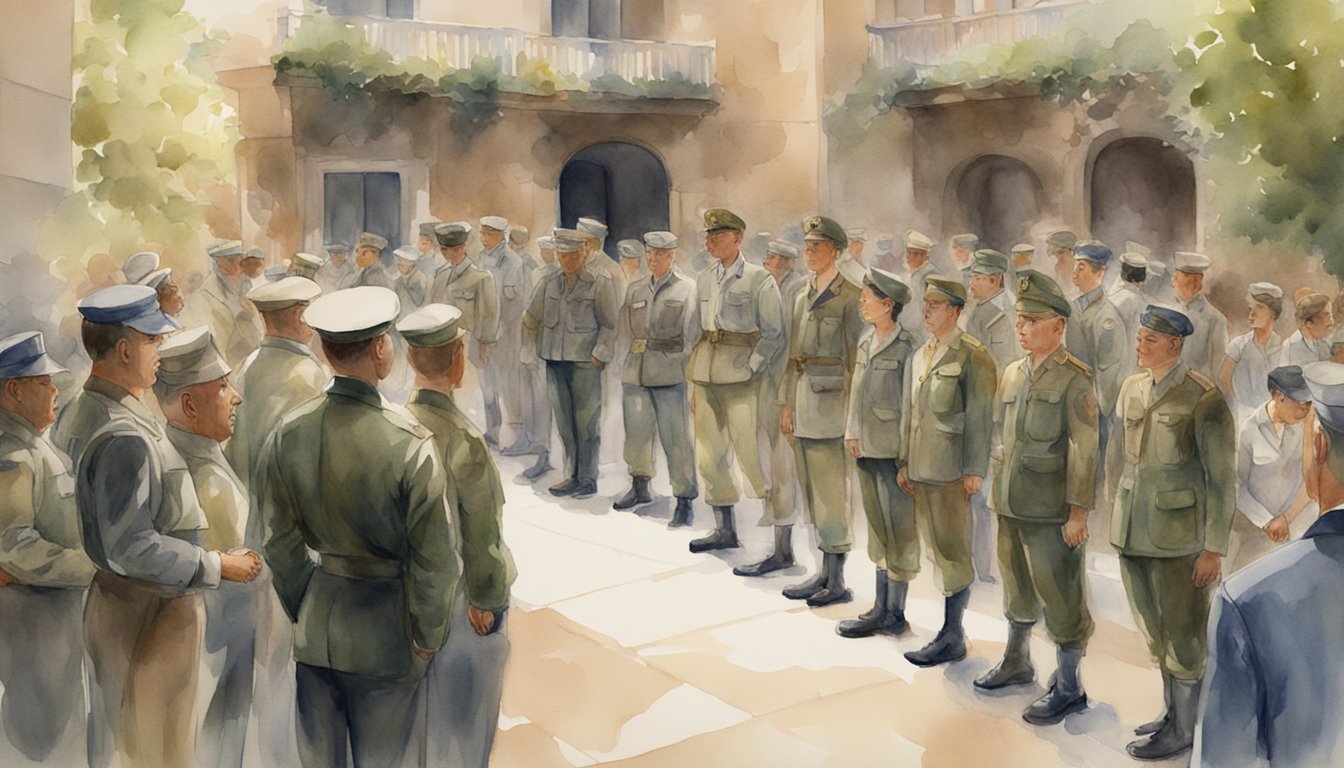
Here you’ll find information about the current state of Spain’s military, including its gear, global strength, and accessibility of official information.
What gear does the Spanish Army currently use?
The Spanish Army uses a mix of modern aircraft, tanks, and rifles.
They have Leopard 2E tanks, Eurofighter Typhoons, and Heckler & Koch G36 rifles.
Their equipment is frequently updated to match NATO standards.
Where does Spain stand on global military strength rankings?
Spain is considered to be in the middle tier globally.
Due to its advanced equipment and well-trained personnel, Spain is often ranked around 20-25 in global military strength.
How powerful is Spain’s military considered to be?
Spain’s military is seen as reliable and effective, especially in NATO.
Their troops are known for their readiness and commitment.
Though not the largest, their forces are respected for their capabilities and strategic bases, like those in Rota and Morón.
Where can I find official information about the Spanish Army online?
You can find official details about the Spanish Army on the Ministerio de Asuntos Exteriores website.
It offers comprehensive insights into Spain’s role in NATO and other defense-related information.
What’s the headcount of Spain’s military forces?
Spain has a total of roughly 120,000 military personnel.
This includes the army, navy, air force, and other units.
The numbers always fluctuate depending on recruitment and training cycles.
How has the structure of the Spanish Army evolved over time?
The structure of Spain’s military has changed significantly.
Since joining NATO in 1982 and integrating fully by 1999, they have modernized their forces and equipment.
They now focus on rapid deployment and joint operations with allies, ensuring a flexible and responsive military force.






